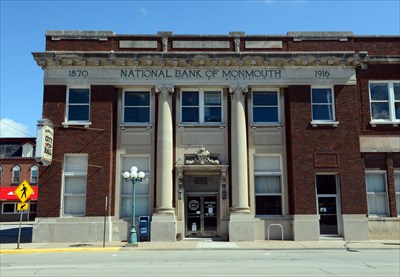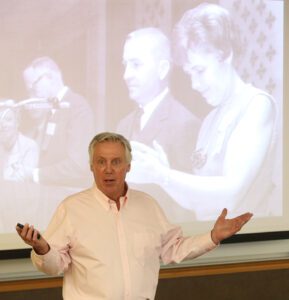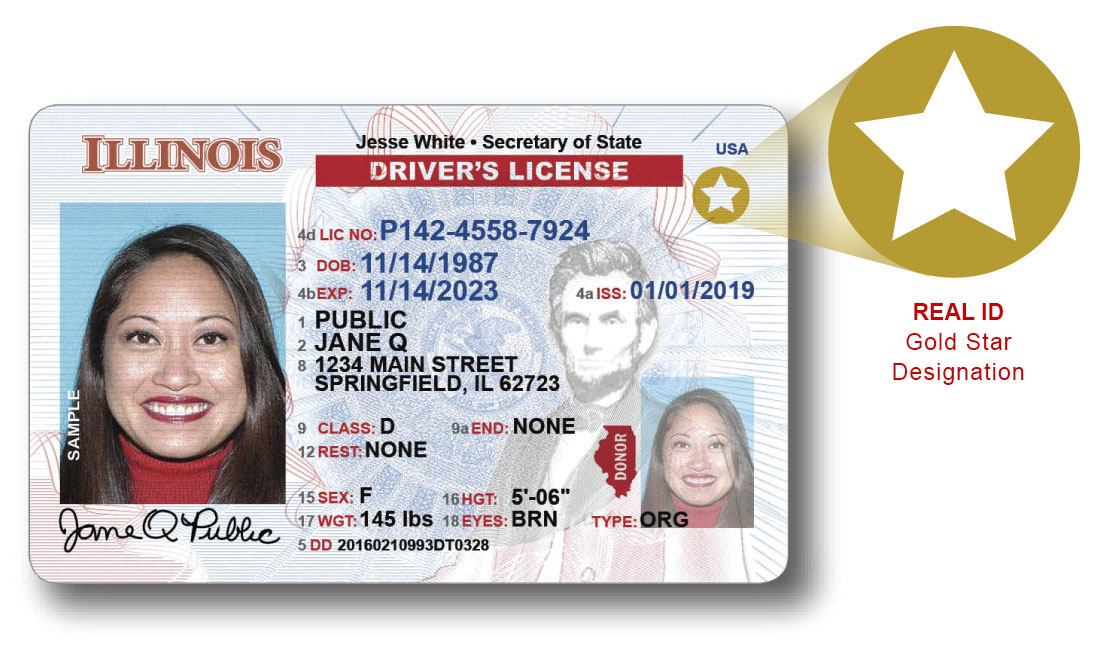Story Courtesy of Jeff Rankin, Monmouth College Historian Author and Literacy Critic.
To earn the trust of their customers, banks have traditionally constructed sturdy buildings with architecture reflecting strength and permanence. Evidence of that can be found in Monmouth’s current city hall building, which originally housed a bank and still stands proudly after more than a century.
Located at 100 East Broadway, the building was erected in 1917 by the National Bank of Monmouth on the site of its earlier bank dating to 1874. It would remain the bank’s headquarters for more than eight decades, until a new building was constructed one block east in 2000. That was when the bank—today known as Midwest Bank—transferred its longtime home to the City of Monmouth, allowing city hall to move from its outdated and crowded quarters at 112 North Main St.
The architect, Paul V. Hyland of Chicago, designed the building in the Georgian style with Renaissance Revival elements, similar to other bank buildings he had designed in Muscatine, Iowa, and Sheboygan, Wisconsin. (He had earlier served as an assistant in designing Chicago’s ill-fated Iroquois Theater.) As Monmouth’s senior financial institution with $1.8 million in assets, the National Bank sought modern and elegant new quarters to house its growing business. Although it had spent $30,000 remodeling the old building in 1899, it resolved to spend $78,000 on a new building—the equivalent of nearly $2 million today.
An architect designs a building, but it is the contractor who must execute the vision. The building contract was awarded to the respected local firm Monmouth-Galesburg Construction, which had built Monmouth Hospital, Monmouth High School, McMichael Hall at Monmouth College and Galesburg’s Orpheum Theater; and would later build Monmouth’s YMCA and Armory. The company had been founded in 1904 as Apsey & Fusch. Partner Fred Apsey Sr. would later move to Galesburg and start his own building firm, but co-founder Robert Fusch and his sons would remain in Monmouth as lifelong contractors.
The son of a Prussian brick mason, 42-year-old Robert Fusch had only an eighth-grade education, but his reputation as a talented builder of large public buildings and as a fair businessman was unmatched.
In June 1916, the bank temporarily relocated to a building two doors east, so demolition of the old building could begin. Stone from the old building was put into a crusher and used to make concrete for the new building’s foundation. Things seemed to be going smoothly when disaster struck.
Fixtures from the old bank had been moved into a storeroom in the Quinby building, directly north of the old bank. Among those was a large steel door from the vault, resting against a wall. On the morning of August 28, 1916, two Monmouth-Galesburg Construction workers were assigned to crate it up to ship back to the factory. Finding that the 2,500-pound door was too heavy to lift, they called in their foreman, Edwin L. Hamilton.
Hamilton had the men lift the bottom of the door with crowbars, while he attempted to slip a timber below it. While he was stooping down, the top of the door started to fall away from the wall. Hamilton stood up, but couldn’t escape being pinned between the door and the sill of the safe. It took eight men a half hour to free Hamilton’s body, and they then discovered his face had been crushed beyond recognition.
Construction resumed the following day and continued at a rapid pace, with plans to open the building the next spring, but slowness in new fixtures arriving caused occupation of the building to be delayed until July. Thousands of Monmouth residents toured and marveled at the facility during an open house on July 31.
The finished two-story building was 55×63 feet in area and two stories high. The bank occupied the basement and first floor, while the second floor was divided into nine offices for doctors, lawyers and other professionals. While early plans called for an elevator, none was ever installed.
The basement contained a storage vault and a furnace room. With the turn of a valve, the bank could switch over from its own furnace to public service heat. The main bank room contained three modern Mosler vaults, one of which was a storage vault located on the mezzanine floor and another was a safe-deposit vault containing 500 boxes.
Walking in the front door, a customer would pass the desks of the president, cashier and assistant cashier and bookkeeper on the left. On the right was a room for male customers and next to that a room for “lady” customers. Beyond that was a room for safe deposit customers. In the rear was an elegant board room, and above that—on the mezzanine level—was the bank’s most unusual room, a fully furnished bedroom.
The bedroom served two purposes—it could be used if a customer or employee became suddenly ill, or it could be used as housing by single male employees in lieu of living in a hotel or boarding house. As a former employee of the National Bank, I recall hearing that one of the former cashiers for years slept there.
Banks as a rule try to partner with local businesses who are their customers, and that was also the case in 1917, as the National Bank touted several businesses that supplied materials for the new building. The list is indicative of the thriving local Monmouth economy of a century ago:
Rolland Johnson, tinwork and sheet steel; Maple City Electric Co., electrical fixtures; A. D. McIntosh & Company, steel stairways and structural iron; B.L. Hunter, painting and decorating; Newman Hardware Co., door, window and cabinet hardware; Monmouth Lumber Co., cement and lumber; Hays & Eastman, plumbing and heating; and E.B. Colwell Co.; rugs, shades, bedroom suite.
Monmouth is fortunate that the bank was built solidly enough to enter its second century of service as a repurposed building, serving a city government challenged with rising costs amid relatively static revenues. An anecdote illustrating that situation was supplied by Monmouth city clerk Susan Trevor, who assumed office not long after the bank became city hall.
At the time, city council meetings were being held in the Business & Technology Center on South Main Street. Mayor Shawn Gillen wanted them to be held in the new city hall, so meetings were attempted there on a trial basis, but lack of proper space soon caused them to be moved back to the BTC.
After Jack Reitman was elected mayor in 2001, the situation was resolved, but only through sweat equity. Reitman happened to have carpentry skills, as did alderman Rod Themanson. Together, they removed walls and constructed a raised dais, transforming former bank offices into the city council chambers being used today.
For Maple City Memories, I’m Jeff Rankin.
















